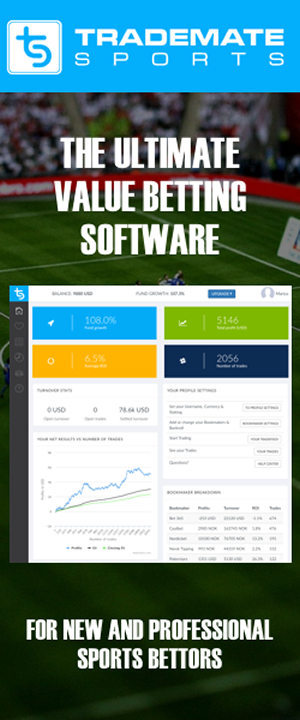Back/Lay Betting Guide
Back high and lay low for a guaranteed profit
A selection's Back Price is always lower than its Lay Price on betting exchanges at any one time, just as the offer price of a tradeable financial instrument is always lower than its bid price.
However, if you can find a way of backing a selection at a higher price than its Lay Price, you will be able to earn a guaranteed profit. The Back/Lay calculator calculates the stake required to ensure that you win exactly the same amount, after commission, whatever the result.
Arbing - exploiting existing price differentials
Arbitrage is one common way of backing higher than the Lay Price.
Arb opportunities occur when pricing discrepancies between sites result in the Back Price available from one betting exchange or bookmaker being higher than a Lay Price available on another exchange.
This price differential is normally caused by a difference of opinions or by different speeds of reaction to important news (injuries,
suspensions, team selection, interviews etc). In particular, betting shops
are often slow to adjust their coupon prices.
Trading - exploiting price movements over time
Trading, on the other hand, consists of backing or laying a selection in anticipation of a price movement and then placing the reverse bet to "close" the trade after the price has moved. Of course, if you are betting on a betting exchange, you do not have to wait until the price has moved before placing your closing bet. You can leave your order for the closing bet immediately after placing your first bet. If the move prices as anticipated your closing bet will get matched, enabling you to lock in an immediate trading profit.
Trading sequences
To trade on a price rise, you should lay first and then back later at the higher Back Price. Conversely, to trade on a price fall, you should back first and then lay later at the lower Lay Price.
Commission and total stake in same-exchangebets
For same-exchangebets, commission is charged on the market profit from both bets, instead of on the profit of each individual bet. Furthermore, the Total Stake for these same-exchangebets is just the stake required for the first bet, because the potential profit from the first bet covers the potential loss of the second bet.
If you have selected Total Stake for a same-exchangetrade, it is assumed that you are trading on a price rise (i.e., laying first). Your Total Stake for such a bet is therefore the same as your liability for the Lay bet.
High yield from same-exchangetrading on price rises
Due to this dual effect of reducing both Commission Paid and Total Stake, same-exchangetrading is a lot more profitable than
cross-markert arbs or trading (i.e., it has a higher Yield). Of the two trading directions, trading on a price rise from a low price (under 1.20, preferably under 1.10) is also the more profitable, with even the slightest upward move movements generating lucrative profits.
In practical terms, this can happen when a leading golfer chokes over the last few holes, a hotly fancied tennis player is underpriced against a potentially awkward opponent, or a decisive goal is scored in the last few minutes of a soccer match.

